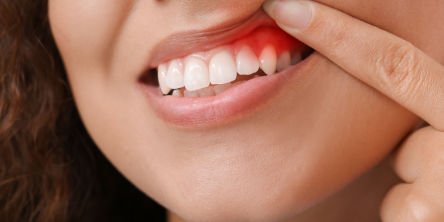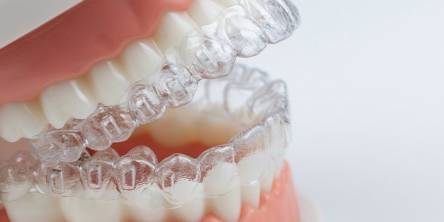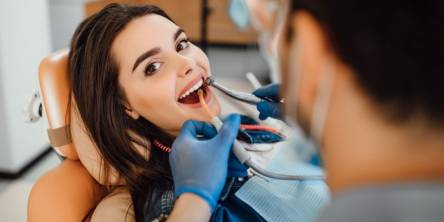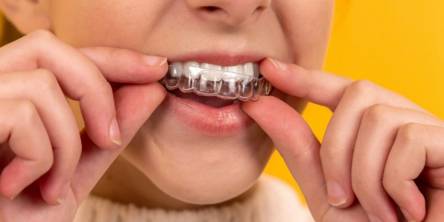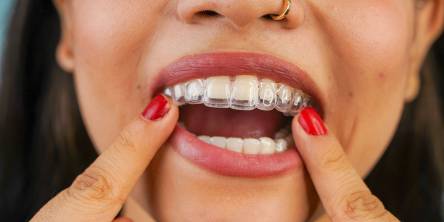How to Help Your Kid Get Used to and Look After Their Braces

Orthodontics is almost a rite of passage for older kids and teenagers, but even though their friends may already have braces, there is bound to be some level of trepidation at the thought of getting their own. Your kid is bound to have lots of questions about what to expect, what will braces feel like and how will they cope initially. One of the most immediate concerns is if having braces will be painful.
What to Expect During and Immediately After Braces Fitting?
The actual process to fit braces onto the teeth is not painful, so your child doesn’t need to worry when the brackets and wires are being bonded in place on the teeth. However, fixed braces do immediately begin to work, so it’s not unusual to notice that the teeth and gums feel a little sore as the teeth start to move.
Expect to Wait a Week or so Before Braces Begin to Feel More Comfortable
Your kid can expect to wait a week or so until their mouth begins to adjust to the sensation of their teeth starting to move. During this period there should be minimal discomfort but if needed, your child can take an over-the-counter painkiller, or it can be useful to get them to rinse their mouth with a solution of warm salt water made by dissolving a teaspoon of salt in a glass of warm water.
Another thing that can help is to stick to eating softer foods for the first few days of treatment such as soup, mashed potato, applesauce, and mac and cheese. Usually, the orthodontist will have some good suggestions as to which foods are best to enjoy while your kid gets used to their braces.
During this period of adjustment, it’s not unusual for the mouth to create extra saliva and your child may notice they need to swallow more frequently for the first hour or so after treatment. This is because the mouth doesn’t quite know what’s happening and will automatically produce more saliva but it’s nothing to be concerned about.
Understandably, it can feel pretty strange to have braces fitted onto the teeth, and most people will find themselves feeling their braces with their tongue for the first few days until they get accustomed to the brackets and wires. It is also possible that the braces may rub slightly against your child’s cheeks or lips. The orthodontist will provide some orthodontic wax that can be placed over the brackets that are rubbing to help your child adjust. However, if these areas continue to rub uncomfortably, you should always get in touch with your child’s orthodontist, so they can check the position of the brackets and can make any necessary adjustments.
Adjusting Their Diet
Very hard, sticky, crunchy or chewy foods will often need to be avoided completely during treatment. These foods can damage traditional metal brackets and wires or otherwise can be extremely difficult to remove from them. Some crunchy foods can still be enjoyed if they are cut up into small pieces and chewed carefully using the back teeth, for example, apples and carrots. Usually, the orthodontist will supply a list of foods that are best avoided and foods that are safe to eat while wearing braces. You can help by making sure there are foods that are enjoyable to eat at home so wearing braces doesn’t feel like a punishment!
Good Dental Hygiene Is Crucial While Wearing Braces
While your kid is wearing their braces, they must take care of their teeth and gums, and it’s crucial that they have an excellent oral hygiene routine. If they fail to look after their teeth properly, there’s the huge risk that once the braces are removed their teeth will have unsightly white spots lesions on them which are the first sign of cavities. Also, tooth areas around the brackets can become discolored if all plaque and food aren’t removed properly after each meal.
Brushing While Wearing Braces
After each meal time try to get your child into the habit of rinsing their mouth with water. This will help to loosen food particles that could be caught around the braces and will make it easier when they brush. They should brush their teeth thoroughly after each meal, taking care to make sure any food trapped in between the braces is removed properly.
After your kid has brushed their teeth last thing at night, it could be useful for them to use a fluoride mouthwash which will provide a little more protection for their teeth, helping to keep them strong and healthy during treatment. Your kid’s orthodontist can provide more detailed information about how to brush correctly with braces, including advice on which toothbrushes or other tools to use.
Flossing with Braces
Your child will need to floss once-a-day, and it can be tricky with braces. However, there are lots of different options to try and which will ensure food debris and plaque are removed thoroughly from around and just under the gum line before they can harden into tartar. Another thing that might be worth considering is purchasing a water flosser that uses a stream of pressurized water to remove plaque and food debris, and it can be extremely effective.
Regular Dental Checkups and Cleanings
While your child is having orthodontic treatment, they will need to continue seeing their regular pediatric dentist for checkups and cleanings. These visits are especially important because their dental team can point out any areas in the mouth that need more attention during brushing and flossing and will generally provide advice on how to keep teeth clean and healthy. Often the hygienist will have lots of useful suggestions and practical advice on how to brush and floss effectively with braces.
Maintaining Oral Hygiene Away From Home
Your kid will still need to brush their teeth while at school or away from home, so make sure they always have a small dental travel kit with them. This should include a travel toothbrush and toothpaste, and it’s useful to pack a small bottle of water. Even if they can’t brush every time, they can still rinse their mouth.
Wearing braces can take a bit of adjustment, and at times your child may struggle. If this is the case, keep gently reminding them that their smile will look fantastic once their braces are removed and the time will most likely pass more quickly than you imagine.
Similar Articles
Gingivitis is an inflammation of the gums caused by the accumulation of plaque and bacteria.
Curious about Invisalign but unsure if it's the appropriate treatment option for you? You are in the right place. We are the experts in clear aligner orthodontic systems
A missing tooth is not only an aesthetic problem but can also affect overall oral health.
A snow-white smile has been a symbol of health, self-confidence, and success. For this reason, teeth whitening is one of the most popular procedures in dentistry. But not everything is as simple as it might seem at first glance
In the age of social media, TikTok has quickly become a platform where trends are born and shared at lightning speed
A toothache can be unbearable and literally throw you out of your usual rhythm of life.
Cosmetic dental procedures improve the appearance of your teeth, but they also affect how your bite functions and how well you can maintain oral hygiene.
For many people, a visit to the orthodontist is solely associated with the fitting of braces in adolescence. But orthodontics is much more than just straightening teeth for aesthetic reasons.
Let’s face it: the moment someone says “Invisalign,” someone else whispers, “But don’t those turn your mouth into a high-tech vending machine?”

